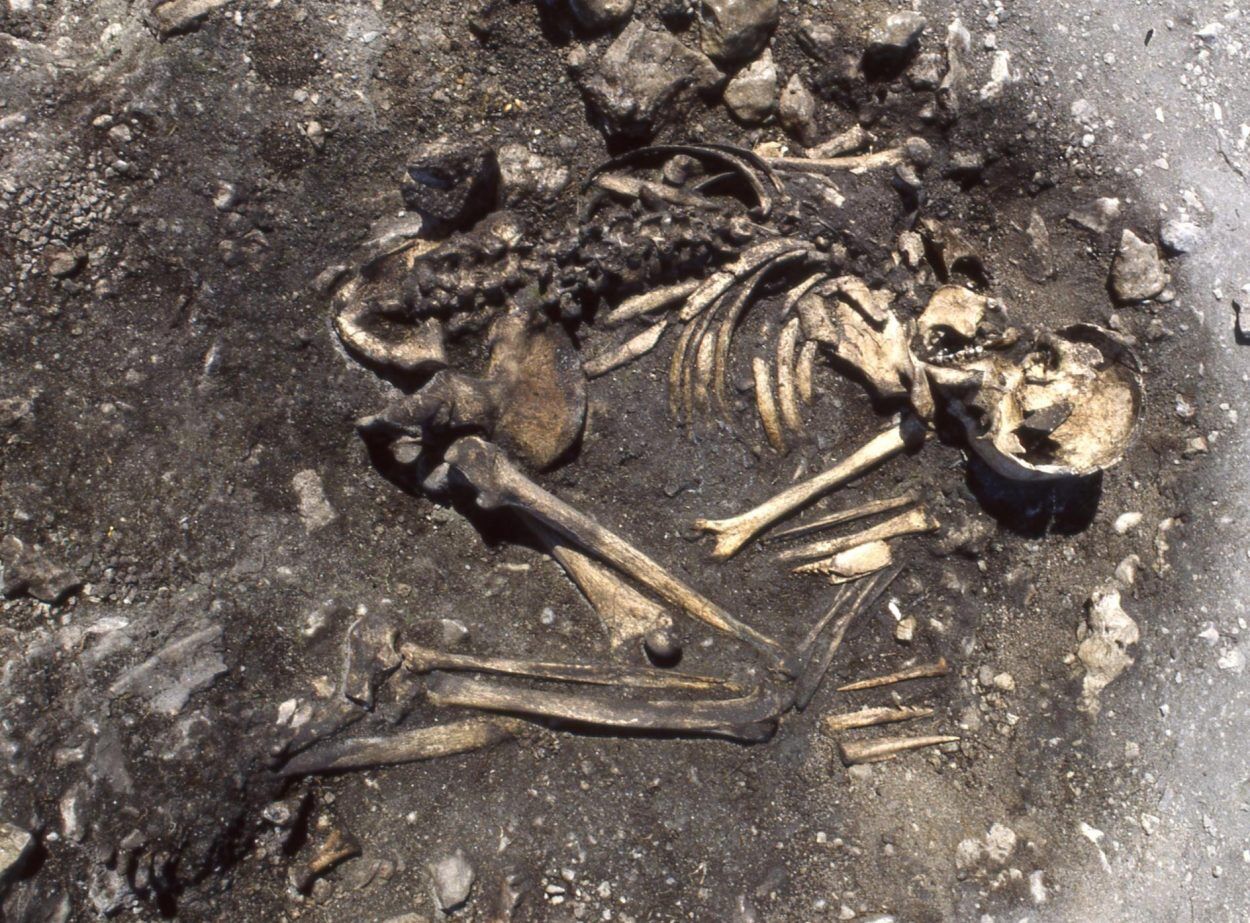In a new interdisciplinary study, researchers have combined archaeological and genetic information to better understand Battle Axe cultural influences discovered in graves of the Pitted Ware culture.
Archaeological remains have shown that in the middle part the Stone Age, there were at least three different but partially contemporary cultural groups in Sweden. The groups are often called: Funnel Beaker culture, which is associated with Scandinavia’s first farmers; Pitted Ware culture, which is mainly linked to fishing and hunting; and Battle Axe culture, which represents a blended culture of herding and farming.
In addition to sustaining themselves in different ways, the three groups had different burial rituals and different kinds of objects. The research team behind the new study has previously been able to show that people in the three cultural groups also differed genetically.
The genetic mapping the researchers did at that time was invaluable as they investigated why some Pitted Ware graves seemed to be influenced by the Battle Axe culture, even though the two cultures lived relatively differently during their centuries of co-existence.
Gotland has several large, well-preserved cemeteries with typical Pitted Ware culture graves. The dead were usually buried lying on their backs and with gifts, such as hunting tools and bones from seals, among other things. Neither large stone blocks nor mounds were placed on the graves.
“In addition to the typical Pitted Ware graves, there were also several atypical graves with apparent influences from Battle Axe culture. For example, some individuals were buried lying on their sides with their legs pulled up, and some had battle axes as burial gifts, which is usually associated with Battle Axe culture,” says Professor Jan Storå, archaeologist at Stockholm University and one of the authors of the study.
The researchers have analysed DNA from 25 Stone Age individuals from four Pitted Ware culture burial grounds on Gotland. About half of the individuals were buried in typical Pitted Ware culture graves and the other half of the graves showed influences from Battle Axe culture.
To their surprise, the researchers found that none of the individuals were genetically related to people from Battle Axe culture. On the contrary, everyone appeared to belong to a very homogeneous group that demonstrated the most genetic similarity to the hunter-gatherer groups of earlier periods.
“This is a unique study that contributes to our understanding of the interactions between the cultural groups of the Stone Age. We can conclude that people in Pitted Ware culture were influenced by, among others, Battle Axe culture, but because we found no genetic connection between the groups, contact was likely in the form of trade and other means, rather than through migration,” says Helena Malmström, archaeogeneticist at Uppsala University and one of the authors of the study.
Header Image – The woman in grave 36 from the Ajvide Pitted Ware burial ground on Gotland is lying in a different burial position, which was influenced by Battle Axe culture. Image Credit : Göran Burenhult





